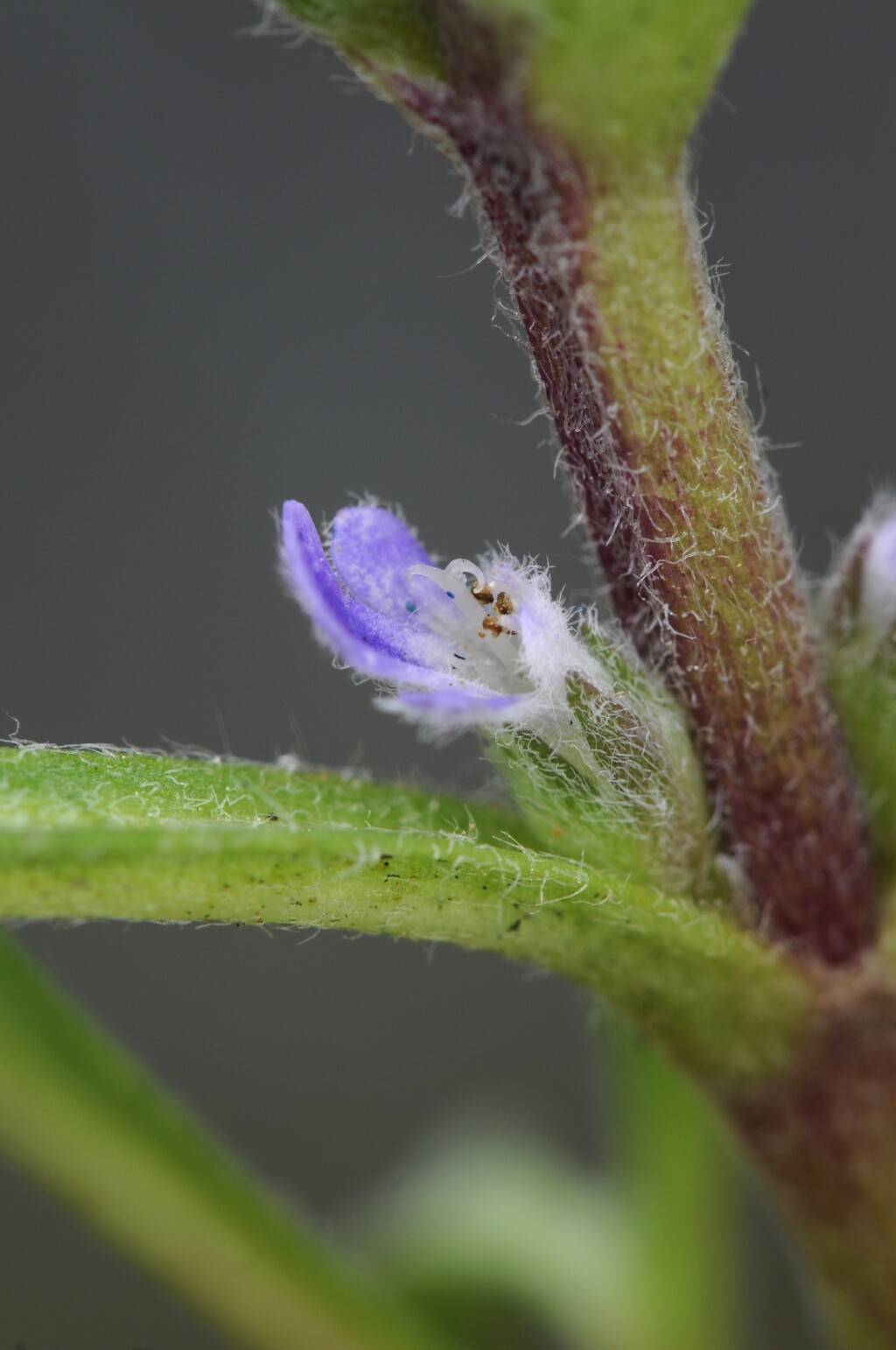Ajuga australis
R.Br. Austral BugleProstrate to ascending or erect herb to c. 50 cm high; non-flowering stems reduced, hence leaves at first forming a subrosette. Leaves narrowly obovate to obovate (rarely narrowly elliptic), 3–12 cm long, 8–35 mm wide, surfaces variably pilose, apex obtuse or rounded, base cuneate, margin entire, crenate, toothed to lobed; petiole 0–3.5 cm long. Internodes of inflorescence usually apparent; floral leaves reducing distally, at least the uppermost entire. Calyx 4–8 mm long, pilose to villous, lobes 1.5–4.5 mm long, faintly veined; corolla c. 5–22 mm long, violet to blue, rarely pinkish, tube scarcely longer than calyx, mid-lobe of abaxial lip spathulate, truncate or 2-lobed, lateral lobes oblong, adaxial lip 1–2 mm long; stamens exserted beyond adaxial lip. Mericarps 3–4 mm long, usually finely reticulate. Flowers spring.
LoM, MuM, Wim, GleP, Brid, VVP, VRiv, MSB, RobP, MuF, GipP, OtP, WaP, Gold, CVU, GGr, DunT, NIS, EGL, EGU, WPro, HSF, HNF, OtR, Strz, MonT, HFE, VAlp. Also SA, Qld, NSW, ACT, Tas. Very widespread and variable, ranging from sandy tracts of the mallee to coastal plains, foothill forests and alpine herbfields.
A very variable species in need of revision. A distinctive variant from mallee sandhills and riverine plains in the north-west of the state is suberect and larger in all parts than the common prostrate or decumbent variant in Victoria, and commonly has paler, pink or mauve flowers. This robust variant may correspond to Ajuga grandiflora Stapf, but without a review of the species from across its entire range, the use of this name should be discouraged.
Conn, B.J. (1999). Lamiaceae. In: Walsh, N.G.; Entwisle, T.J., Flora of Victoria Vol. 4, Cornaceae to Asteraceae, pp. 418–459. Inkata Press, Melbourne.
 Spinning
Spinning

